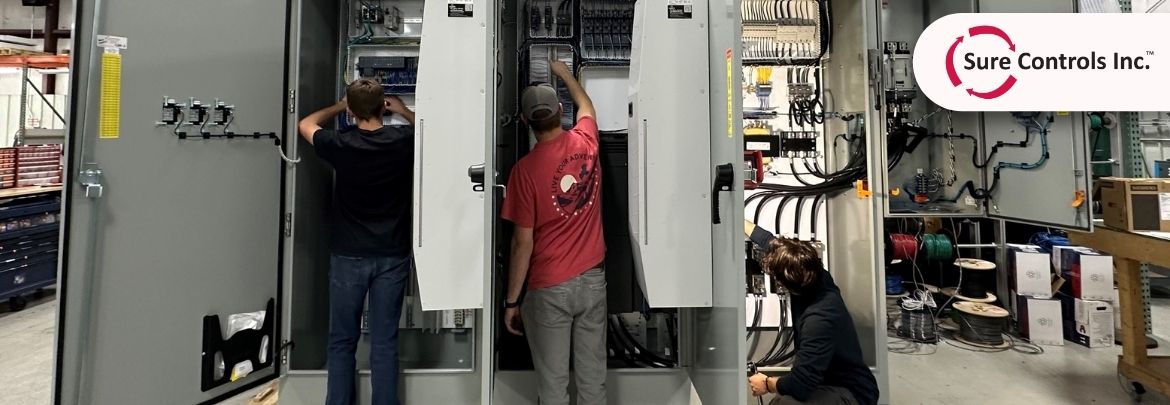10 Essential Steps When Choosing a Control Panel Shop
Selecting a control panel shop for your project is a choice that can usher in efficiency or create headaches. To navigate this crucial selection process, you need a comprehensive approach. Here are 10 paramount steps to help you find the perfect match for your control panel needs.
1. Clearly Define Your Control System Requirements
Before you even start looking for a designer, it’s imperative to have a crystal-clear understanding of your control system requirements. This means documenting everything – from the functionality you need to the environment the system must operate in. Detailing specifics like the number of inputs/outputs, required safety features, and any industry standards your system must adhere to will ensure you communicate effectively with prospective designers.
2. Assess the Panel Shop’s Industry Experience
Industry-specific experience is invaluable as it imparts a deep understanding of the unique challenges and requirements within sectors. In your search, inquire about the design team’s experience, project portfolio, and any client testimonials. A designer versed in your industry’s intricacies can provide valuable insights and ensure the end product meets or exceeds expectations.
3. Examine their Ability to Integrate Cutting-Edge Technology
Technological advances are rapidly shaping the manufacturing landscape, and your electrical control panel must stay abreast of these changes. A designer who is skilled in integrating the latest technologies—such as IIoT, automation solutions, and smart manufacturing tools—can help future-proof your systems, allowing for scalability and innovation.
4. Investigate the Company’s Design and Manufacturing Processes
Take a deep dive into the designer’s methodology. How do they approach the design process, and what tools do they use? Understanding their workflow will give you an idea of their commitment to efficiency, transparency, and quality. Moreover, inquire about their manufacturing processes to ensure they align with industry best practices.
5. Enquire About Compliance and Certification Expertise
Control panels are subject to various industry regulations and certifications, and compliance is non-negotiable. Therefore, it’s crucial to confirm the designer’s understanding of regulatory standards and their track record of producing compliant systems. Look for designers familiar with ISO standards, UL listings, and other relevant certifications.
6. Explore Their Customization Capability
Off-the-shelf control panels might not always align with your unique system requirements. Thus, it’s essential to partner with a designer who can tailor control panel solutions to your specific needs. A willingness to customize indicates a flexible and customer-centric approach that can result in a control system optimized for your operations.
7. Scrutinize Design for Manufacturability (DFM)
DFM is a critical step that ensures your control panel design can be easily and cost-effectively manufactured. Any designer worth their salt will have a robust DFM process in place. Engage in conversations about how the designer streamlines manufacturing, minimizes waste, and facilitates quality control throughout the process.
8. Evaluate the Test and Commissioning Procedures
Testing is the litmus test for the functionality and reliability of your control panel. A comprehensive testing regimen should be non-negotiable. Inquire about the designer’s testing facilities and procedures. Look for a comprehensive approach that includes functionality, safety, and stability testing, as well as documented results for your records.
9. Inquire About the After-Sales Support and Warranty
What happens after your control panel goes live is as important as the design process. Record what the designer offers in terms of after-sales support, including training, troubleshooting, and regular maintenance. A solid warranty policy also signals confidence in their workmanship and can safeguard your investment.
10. Review Past Projects and Client Satisfaction
Gauging a potential designer’s ability through past projects and client satisfaction is one of the most reliable methods of assessment. Request detailed case studies or, if possible, site visits to completed projects. Speak with current or past clients to gain insights into the designer’s communication, project management, and problem-solving capabilities.
By adhering to these 10 essential steps, you’re well on your way to selecting a control panel designer who not only meets your practical needs but also aligns with your strategic business objectives. Remember, the right designer can elevate your manufacturing capabilities and set you on a trajectory for success. So take the time and effort to choose wisely. Continue learning about control panel design, and stay up-to-date on industry trends for optimal results.
Additional Considerations
While the 10 steps outlined above are crucial in selecting a control panel designer, there are also other considerations to keep in mind.
Budget
It’s essential to have a clear understanding of your budget requirements before beginning the search for a designer. This will help you narrow down your options and ensure that you can afford the services offered by potential designers.
Communication
Effective communication is key to any successful project, and it’s no different with control panel design. Look for a designer who communicates clearly and regularly throughout the process, keeping you updated on progress and addressing any concerns or questions you may have.
Flexibility
In today’s rapidly evolving manufacturing landscape, adaptability and flexibility are crucial. Look for a designer who can pivot and adjust to changing needs or requirements, ensuring your control panel remains relevant in the long term.
Innovation
A great control panel designer should be able to think outside the box and offer innovative solutions that can enhance your system’s performance and efficiency. Don’t be afraid to ask about their approach to problem-solving and incorporating new technologies.
Reputation
Last but certainly not least, consider the designer’s reputation in the industry. Look for testimonials from satisfied clients, awards or recognition they may have received, and overall feedback from others in the manufacturing community. A designer with a stellar reputation is more likely to deliver exceptional results.
In conclusion, selecting the right control panel designer requires thorough research, clear communication, and an understanding of your needs and budget. By following these steps and considering additional factors such as innovation and reputation, you can ensure that your chosen designer will provide a high-quality, efficient solution that meets both your current and future manufacturing requirements.
If you are interested in learning more, let’s connect! Fill out the form below or e-mail us at [email protected]

